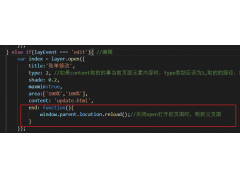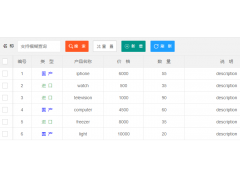Combining Different Tables Together in R(在 R 中将不同的表组合在一起)
问题描述
我正在使用 R.
针对这个问题,我生成了以下数据:
For this problem, I generated the following data :
set.seed(123)
v1 <- c("2010-2011","2011-2012", "2012-2013", "2013-2014", "2014-2015")
v2 <- c("A", "B", "C", "D", "E")
v3 <- c("Z", "Y", "X", "W" )
data_1 = data.frame(var_1 = rnorm(871, 10,10), var_2 = rnorm(871, 5,5))
data_1$dates <- as.factor(sample(v1, 871, replace=TRUE, prob=c(0.5, 0.2, 0.1, 0.1, 0.1)))
data_1$types <- as.factor(sample(v2, 871, replace=TRUE, prob=c(0.3, 0.2, 0.1, 0.1, 0.1)))
data_1$types2 <- as.factor(sample(v3, 871, replace=TRUE, prob=c(0.3, 0.5, 0.1, 0.1)))
data_2 = data.frame(var_1 = rnorm(412, 10,10), var_2 = rnorm(412, 5,5))
data_2$dates <- as.factor(sample(v1, 412, replace=TRUE, prob=c(0.5, 0.2, 0.1, 0.1, 0.1)))
data_2$types <- as.factor(sample(v2, 412, replace=TRUE, prob=c(0.3, 0.2, 0.1, 0.1, 0.1)))
data_2$types2 <- as.factor(sample(v3, 412, replace=TRUE, prob=c(0.3, 0.5, 0.1, 0.1)))
data_3 = data.frame(var_1 = rnorm(332, 10,10), var_2 = rnorm(332, 5,5))
data_3$dates <- as.factor(sample(v1, 332, replace=TRUE, prob=c(0.5, 0.2, 0.1, 0.1, 0.1)))
data_3$types <- as.factor(sample(v2, 332, replace=TRUE, prob=c(0.3, 0.2, 0.1, 0.1, 0.1)))
data_3$types2 <- as.factor(sample(v3, 332, replace=TRUE, prob=c(0.3, 0.5, 0.1, 0.1)))
然后我使用这 3 个数据集创建了一个数据集:
I then created a single data set using these 3 data sets:
data_1 <- data.frame(name="data_1", data_1)
data_2 <- data.frame(name="data_2", data_2)
data_3 <- data.frame(name="data_3", data_3)
problem_data <- rbind(data_1, data_2, data_3)
根据以上数据,我可以制作下表:
Based on the above data, I was then able to make the following table:
summary <- xtabs(~name+types+types2, problem_data)
ftable(summary, row.vars=1, col.vars=2:3)
types A B C D E
types2 W X Y Z W X Y Z W X Y Z W X Y Z W X Y Z
name
data_1 26 29 172 104 27 20 111 48 12 10 64 32 12 10 43 33 15 9 56 38
data_2 13 14 80 54 9 12 56 35 5 4 25 18 3 2 16 14 8 4 27 13
data_3 6 11 62 48 7 12 38 24 6 2 20 8 6 5 19 14 7 3 27 7
我正在尝试修改上表,使其看起来像这样:
到目前为止我尝试了什么:
library(memisc)
summary <- xtabs(~dates+name+types+types2, problem_data)
t = ftable(summary, row.vars=1, col.vars=2:4)
show_html(t)
虽然上表不是我最初想要的,但它看起来确实不错.我唯一要补充的是分隔边界线".这使得更容易看到新类别何时开始(例如 data_1、data_2、data_3),以及total"和总计"行.
Although the above table is not what I was originally looking for, it does seem to appear quite nice. The only thing I would like to add are "separating borders lines" which make it easier to see when new categories begin (e.g. data_1, data_2, data_3), as well as "total" and "grand total" rows.
有人可以告诉我怎么做吗?
Can someone please show me how to do this?
谢谢!
注意:没有线条的表格
推荐答案
瞧:最终版本:删除了第一个版本:注意:我删除了 Version1 行.添加行和格式没有问题(注释掉):
Voila: Final version: Removed first version: Note: I removed the lines Version1. It is no problem to add lines and formatting(commented out):
没有线条:
带线:
library(tidyverse)
#install.packages("ftExtra")
library(ftExtra)
library(flextable)
library(janitor)
#library(officer)
# ##############################################################################
# Calculating the Grand total
my_func_grand_total <- function(df){
df %>% select(-c(var_1, var_2)) %>%
as_tibble() %>%
group_by(dates, types2, types) %>%
count() %>%
arrange(types) %>%
mutate(types = paste(types, types2, sep = "_")) %>%
ungroup() %>%
select(-types2) %>%
pivot_wider(
names_from = types,
values_from = n,
values_fill = 0
)
}
# list of dataframes
df_list_grand_total <- list(data_1 = data_1, data_2 = data_2, data_3 = data_3)
# apply my_func_grand_total to the list
df_list_grand_total <- purrr::map(df_list_grand_total, my_func_grand_total)
# get the row with Grand total
Grand_total <- bind_rows(df_list_grand_total, .id = "name") %>%
adorn_totals() %>%
slice(16) # last row
###############################################################################
###############################################################################
# Calculating the other things:
df_list <- list(data_1 = data_1, data_2 = data_2, data_3 = data_3)
my_func <- function(df){
df %>% select(-c(var_1, var_2)) %>%
as_tibble() %>%
group_by(dates, types2, types) %>%
count() %>%
arrange(types) %>%
mutate(types = paste(types, types2, sep = "_")) %>%
ungroup() %>%
select(-types2) %>%
pivot_wider(
names_from = types,
values_from = n,
values_fill = 0
) %>%
adorn_totals()
}
df_list <- purrr::map(df_list, my_func)
big_border = fp_border(color="black", width = 2)
#std_border = fp_border(color="orange", width = 1)
bind_rows(df_list, .id = "name") %>%
bind_rows(Grand_total) %>%
group_by(name) %>%
as_flextable(groups_to = "merged") %>%
delete_part(part = "header") %>%
add_header(name = "name", dates="types2", A_W="W", A_X="X", A_Y="Y", A_Z="Z",
B_W="W", B_X="X", B_Y="Y", B_Z="Z",
C_W="W", C_X="X", C_Y="Y", C_Z="Z",
D_W="W", D_X="X", D_Y="Y", D_Z="Z",
E_W="W", E_X="X", E_Y="Y", E_Z="Z", top=FALSE) %>%
add_header(dates="types", A_W="A", A_X="A", A_Y="A", A_Z="A",
B_W="B", B_X="B", B_Y="B", B_Z="B",
C_W="C", C_X="C", C_Y="C", C_Z="C",
D_W="D", D_X="D", D_Y="D", D_Z="D",
E_W="E", E_X="E", E_Y="E", E_Z="E", top=TRUE) %>%
merge_h(part = "header") %>%
#align(align = "center", part = "all") %>%
align(align = "left", part = "body") %>%
autofit() %>%
border_remove()
#hline_top(part="all", border = big_border) %>%
#hline_bottom(part="body", border = big_border)
###############################################################################
这篇关于在 R 中将不同的表组合在一起的文章就介绍到这了,希望我们推荐的答案对大家有所帮助,也希望大家多多支持编程学习网!
本文标题为:在 R 中将不同的表组合在一起


基础教程推荐
- 每次设置弹出窗口的焦点 2022-01-01
- WatchKit 支持 html 吗?有没有像 UIWebview 这样的控制器? 2022-01-01
- 如何使用sencha Touch2在单页中显示列表和其他标签 2022-01-01
- 如何在特定日期之前获取消息? 2022-01-01
- jQuery File Upload - 如何识别所有文件何时上传 2022-01-01
- 什么是不使用 jQuery 的经验技术原因? 2022-01-01
- 为什么我在 Vue.js 中得到 ERR_CONNECTION_TIMED_OUT? 2022-01-01
- Node.js 有没有好的索引/搜索引擎? 2022-01-01
- 如何使用 CSS 显示和隐藏 div? 2022-01-01
- Javascript 在多个元素上单击事件侦听器并获取目标 2022-01-01

















